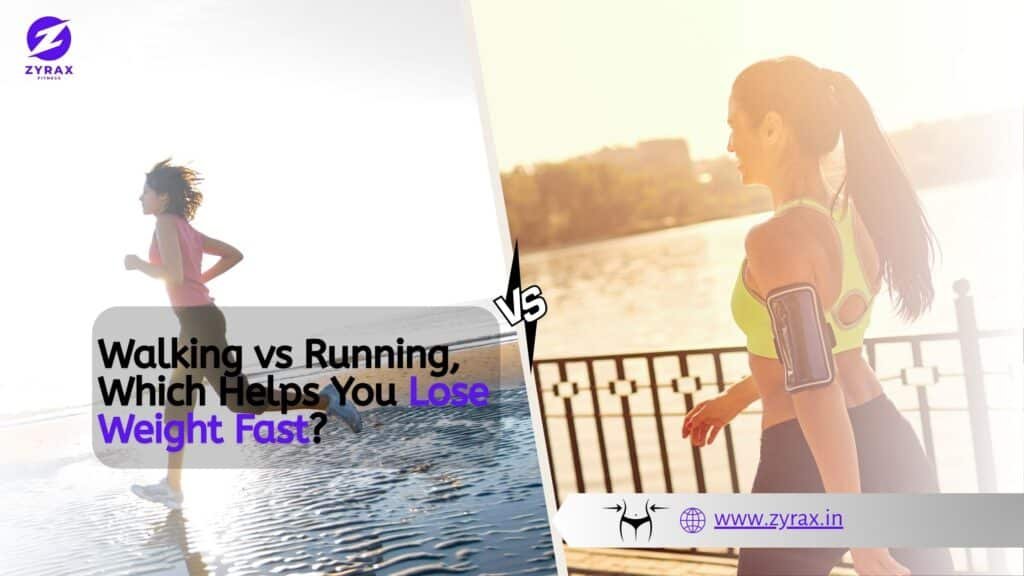
Walking vs Running, Which Helps You Lose Weight Fast?
When it comes to fitness and weight loss, the debate of walking vs running often confuses people. Both are popular cardio exercises that improve heart health, burn calories, and support overall well-being. But which one works better for lose weight fast ? Let’s break it down.
Benefits of Cardio Workouts
Cardio, or aerobic exercise, simply means any activity that raises your heart rate and makes you breathe harder. Both walking and running fall under this category.
Some major benefits of regular cardio include:
- Improved blood circulation
- Better control of blood sugar levels
- Stronger heart and lungs
- Boosted memory and brain function
- Reduced risk of chronic diseases
- Improved mood and lower stress
- Better sleep quality
- Healthy weight management
Whether you choose to walk or run, both provide these long-term health benefits.
Walking vs Running: Key Differences
1. Calorie Burn
- Walking is moderate-intensity, while running is vigorous.
- A 160-pound person burns around 156 calories walking at 3.5 mph for 30 minutes.
- The same person burns about 356 calories running at 6 mph for 30 minutes.
➡️ Running burns more calories in less time, making it more effective for fast weight loss.
2. Impact on Joints
- Walking is low-impact, with at least one foot on the ground at all times.
- Running is high-impact, where your body absorbs nearly 3x your body weight with every stride.
➡️ Walking is gentler and safer for beginners, older adults, or people recovering from injuries.
3. Injury Risk
- Walkers have a very low risk of injury.
- Studies show 19% to 79% of runners experience injuries like shin splints, stress fractures, runner’s knee, or plantar fasciitis.
➡️ Running helps with quicker weight loss, but the injury risk is higher.
4. Osteoarthritis & Joint Health
Interestingly, research shows runners are not at higher risk of osteoarthritis compared to walkers, mainly because runners usually have a lower body mass index (BMI).
Walking vs Running for Weight Loss
If your goal is to lose weight fast, here’s the breakdown:
- Running: Burns calories at twice the rate of walking. Ideal for those who want faster results and can handle high-intensity workouts.
- Walking: Burns fewer calories per minute but can still support weight loss if done consistently for longer durations.
Power Walking & Speed Walking
- Speed walking (3–5 mph) can burn nearly the same calories as jogging.
- Power walking with intervals (alternating fast and normal pace) is great for boosting calorie burn.
Incline Walking
- Walking uphill or on a treadmill incline increases intensity and calorie burn, sometimes matching running.
Weighted Walking
- Adding a weighted vest (5–10% of body weight) enhances calorie burn without straining joints.
Which One Should You Choose?
- Choose Walking If:
- You’re a beginner
- You want a low-impact, safe, and beginner-friendly workout
- You’re looking for a sustainable daily habit
- You’re a beginner
- Choose Running If:
- You want faster weight loss
- You’re physically fit and can handle high-impact activity
- You prefer shorter, more intense workouts
- You want faster weight loss
➡️ At the end of the day, the best choice in the walking vs running debate is the one you enjoy and can stick with consistently.
Tips to Get the Most Out of Walking
- Walk in groups for motivation
- Swing your arms for extra calorie burn
- Try incline walking or hilly routes
- Use walking poles or a weighted vest
- Experiment with interval training (slow-fast walking)
Final Verdict: Walking vs Running
Both walking and running are excellent forms of cardio. If your priority is fast weight loss, running wins the race. But if you’re looking for a safer, more sustainable, and joint-friendly option, walking is just as effective in the long run.
Consistency is the key—whether you walk, run, or do a mix of both.
FAQs on Walking vs Running
1. Which burns more calories, walking or running?
Running burns about twice as many calories as walking in the same time frame.
2. Can walking help with weight loss?
Yes, brisk or incline walking helps burn calories, improves metabolism, and supports fat loss.
3. Is running bad for your knees?
Not necessarily. Studies show runners may have a lower risk of osteoarthritis due to lower body weight.
4. Which is better for beginners—walking or running?
Walking is safer and more beginner-friendly, while running is better for advanced fitness levels.
5. Can speed walking replace running?
Power walking at higher speeds or on an incline can burn similar calories to running, making it a good alternative.
